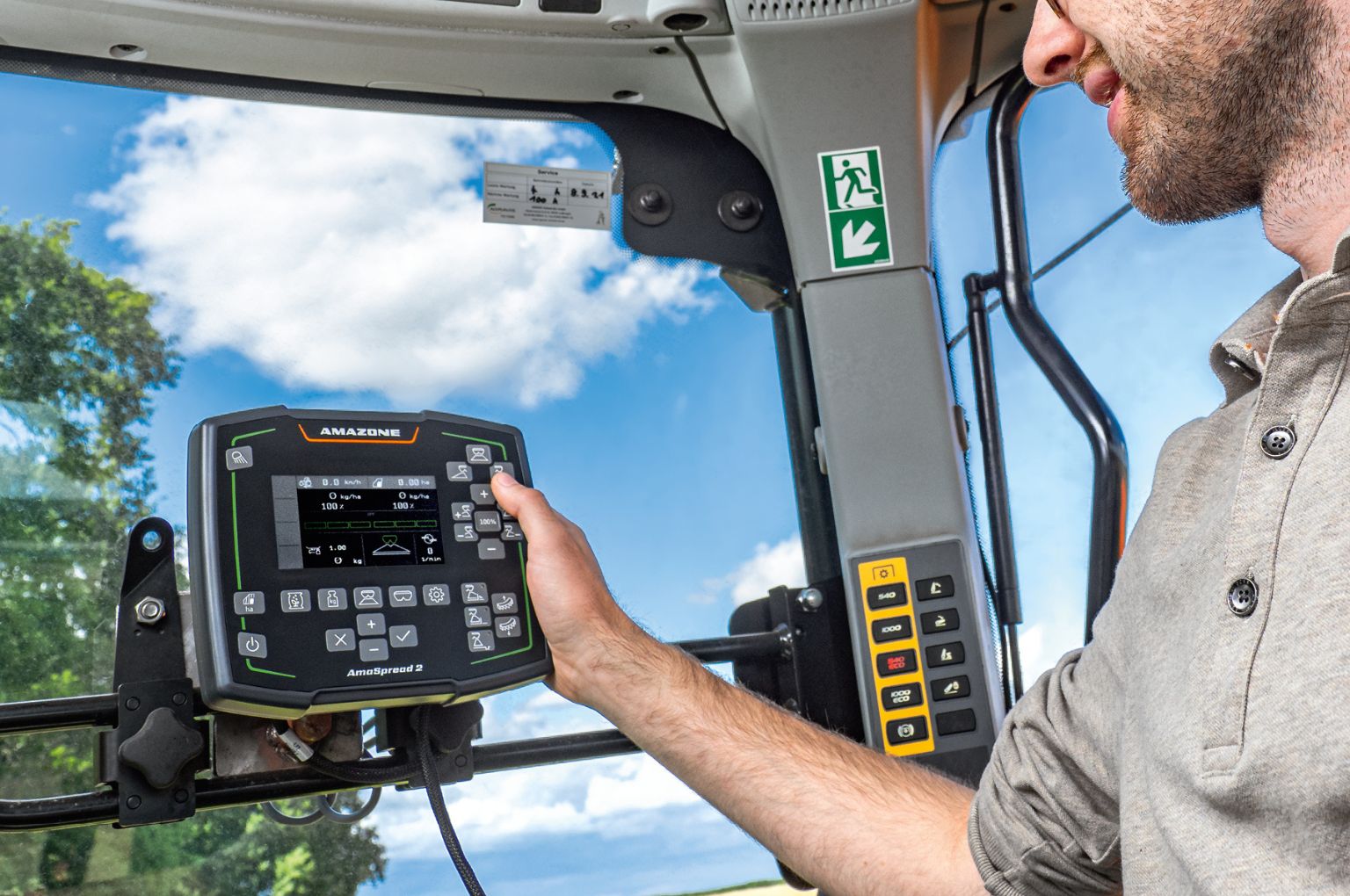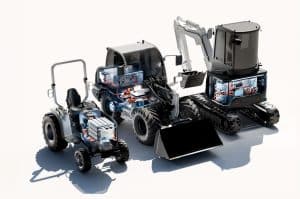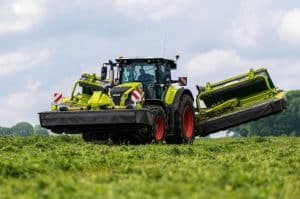Amazone is now offering the new AmaSpread 2 in-cab terminal for the ZA-V Profis Control weigh cell spreader. This provides the mid-range segment with a machine-specific terminal with its comfortable operation and simple menu navigation.
The logical operating structure, combined with the high-contrast 4.3 inch colour display, guarantees operator comfort with a modern look. All the spreading information concerning application rate, residual quantity and area coverage is clearly and constantly displayed.
The terminal does not need detailed menu guidance as each significant function has its own button. All the important functions, such as the application rate and the position of the border spreading device can be actuated directly and comfortably using a back-lit button. This means that one-hand operation during spreading is not a problem.
Material-specific settings for up to 10 different fertilizers can be stored and recalled at any time. In addition, the spread rate, covered area and working time are stored and can be utilized by the operator for easy documentation.
All features safely under control
Apart from the forward speed related spread rate regulation, AmaSpread 2 also allows, amongst other things, the manual switching of up to 6 part-width sections and the use of the Profis weighing system. In addition, rapid adaptation of the fertilizer rate enables the timely reaction to field conditions. The in-cab terminal also offers precise spread rate regulation thanks to the 200 Hz weighing system. In this way, a constant application rate is guaranteed, even with varying fertiliser quality. Combination with the optional tilt sensor guarantees precise weighing results, even in hilly terrain.
When using the Limiter V+ border spreading system, the operator can switch between side, boundary or water-course spreading, depending on the border situation, without leaving the tractor cab. Optional low level sensors give the operator an early notification of an upcoming emptying of the hopper via the AmaSpread 2. The possibilities of the terminal are rounded off by the integration of work lights.














